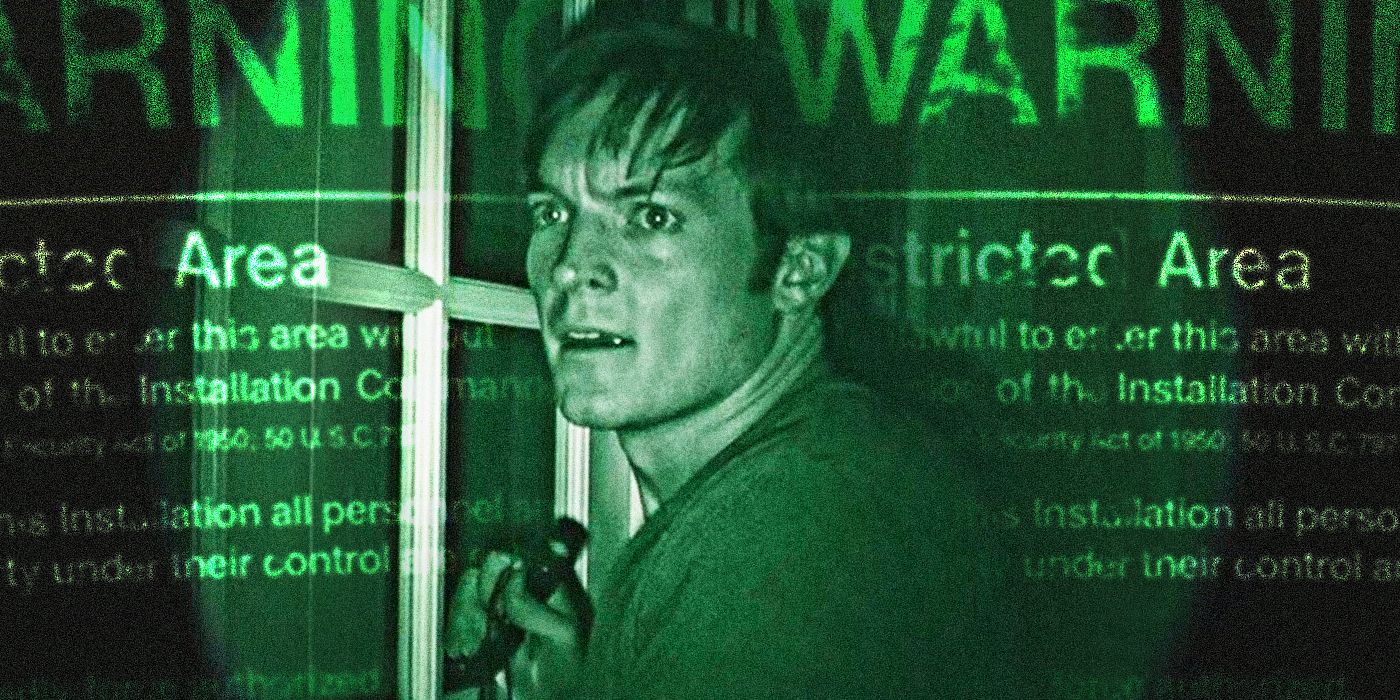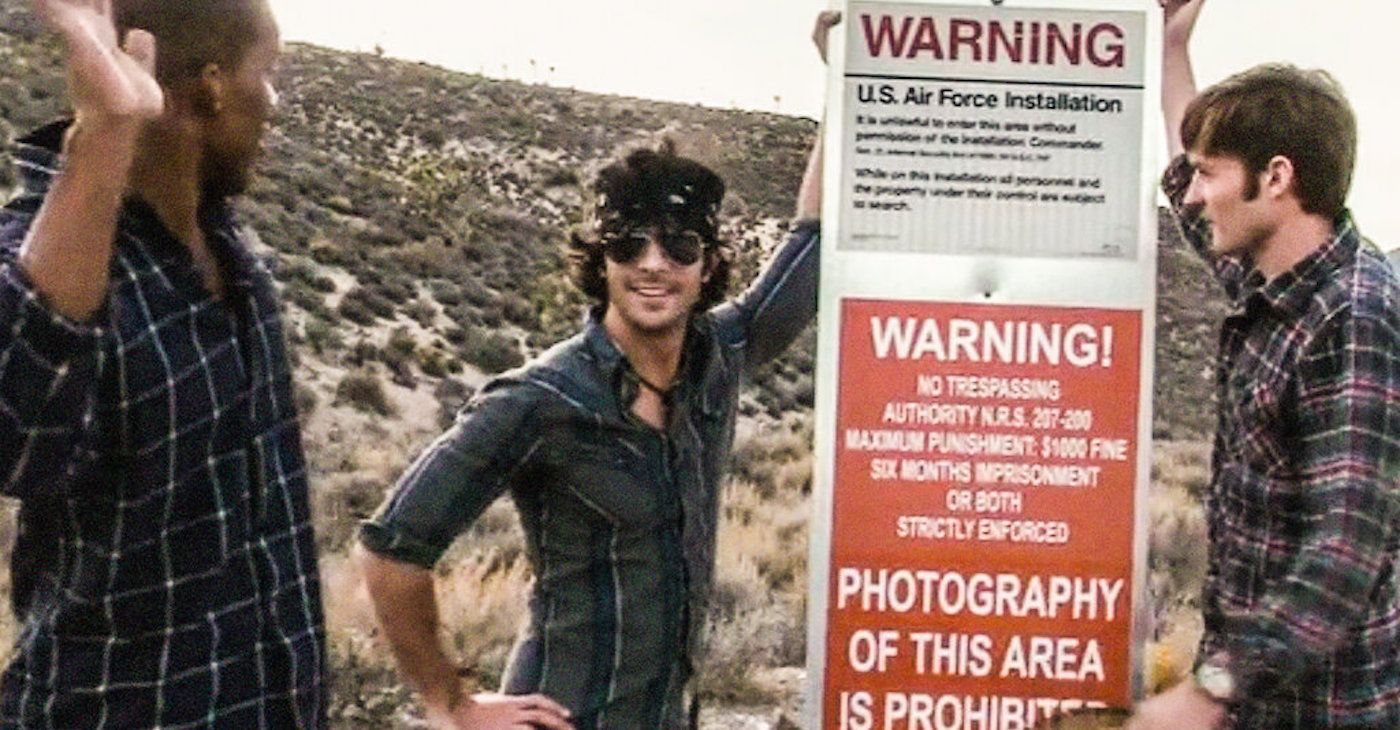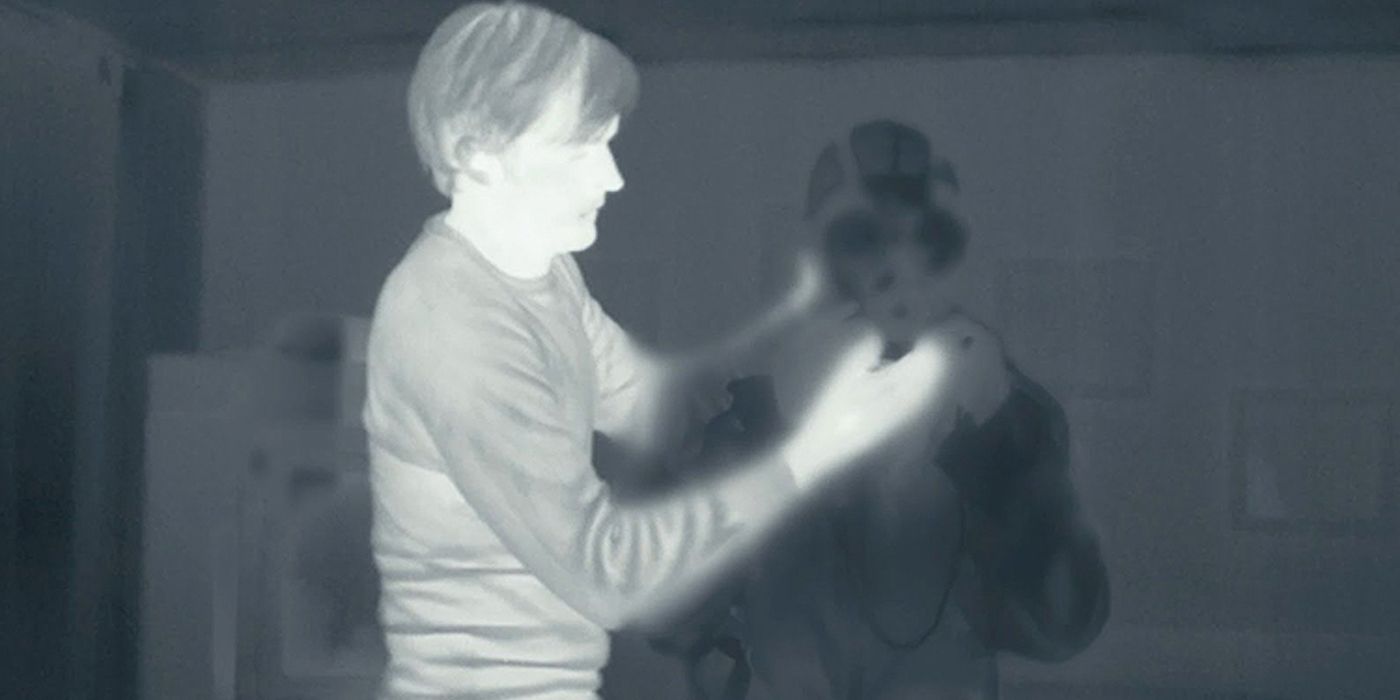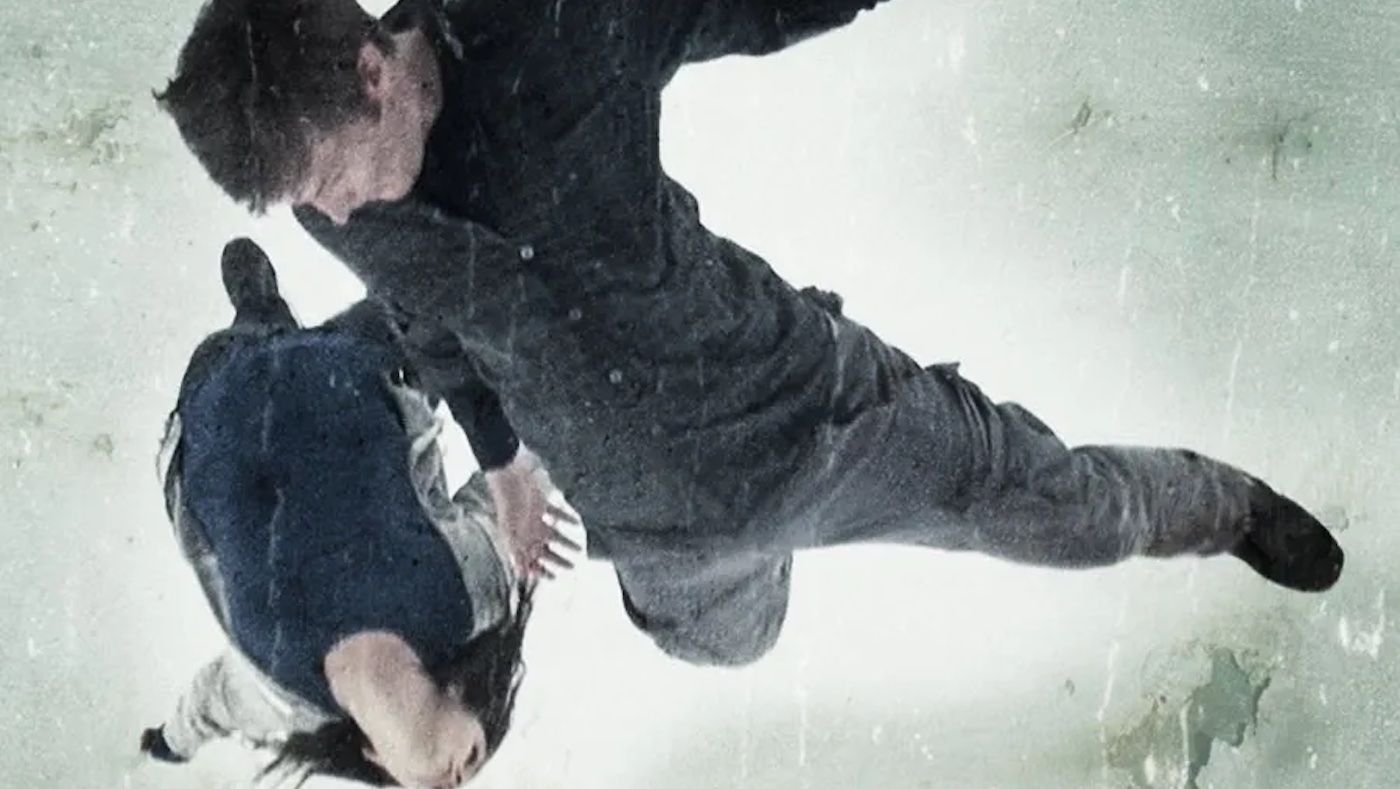Paranormal Activity’s impact on horror and the moviegoing landscape in general was considerable. With a clever marketing campaign that focused on audience reaction and encouraged prospective viewers to request their local theater play the movie, it created massive buzz and brought the found footage format back into vogue. It also propelled a former software programmer to great success as an up-and-coming director. Over the next few years, Oren Peli would enjoy his newfound status by producing a number of well-known horror movies, including Paranormal Activity sequels, the Insidious movies, and Chernobyl Diaries. It would take a number of years before he got back into the director’s chair, but when he did, it was for something grander and more ambitious than his debut picture: 2015's Area 51.
What Is 'Area 51' About?
Area 51 is the story of four young people with a mission. One night at a party, Reid (Reid Warner) wanders off from his friends Darrin (Darrin Brag) and Ben (Ben Rovner) and they later find him standing in the road, dazed. Cut to three months later, and Reid has been obsessing over UFOs, certain that some otherworldly entity contacted him that night and that he will have the answers if he can just break into Area 51. Darrin and Ben reluctantly agree to help him, although they both seem to assume he will snap out of it and call the whole thing off when he realizes what a ludicrous idea it is. But he doesn’t. Through various clandestine methods, he meets with UFOlogists, security people, and anyone else who can prepare him for his crazy mission. The most important of these is Jelena (Jelena Nik), whose father formerly worked at the base before penning an exposé and committing suicide, leaving her all of his secret maps, notes, and books.
The mission is just as difficult and crazy as it seems. With the intel they’ve built up, the gang is ready for most things: they’ve been taking pills to mask their ammonia levels, they have special jumpsuits pumped full of freon gas to hide their body heat, and have been trained to deactivate motion sensors. It seems they are prepared for anything except for what they end up finding. In the manner customary to found footage or expedition-based horror, the characters don’t seem to have a plan for what happens when they actually find the ghosts, monsters, aliens, etc. And when they seem so damn sure that they will find them, it does seem to be a bit of a hole in their logic. But we can accept that as foolhardy young men with more testosterone than common sense, it seems like a good idea to them at the time.
Oren Peli Puts His Mark on 'Area 51'
Things start out in a fairly standard Peli fashion: the characters are introduced in casual social settings while playing with a video camera, with choppy editing allowing for maximum output with minimal takes. None of them have a great deal of depth, but they are not unlikeable and have good chemistry as a group of friends. Admittedly, the camerawork and editing are a bit cynical - one might even say manipulative - if you pay attention to it. The action keeps cutting in the space of a single scene; exactly who and why is filming at any one time can be a little perplexing; different camera modes are switched back and forth for no obvious reason other than it looks cool. It gets a little lazy in the knowledge that its audience will not ask too many questions when it comes to framing its shots. But it’s when the movie takes off that the found footage style really earns its stripes, and is used to its full potential.
People who saw any of the Paranormal Activity movies will probably all report the same thing back about them: nothing happens for 80 minutes, and then there’s a two-minute climax that may or may not have been worth the time invested. While the likes of Paranormal Activity, and to a larger extent, The Blair Witch Project, can justify their slow build as character development and scene-setting, it’s undeniable that this approach can be a turnoff. So Area 51 does something a little different - it delivers a really hearty two-course meal, with a starter and a main that leaves you so satisfied that you couldn’t possibly find room for dessert. Once in Nevada, the gang stalks a high-ranking military guy in order to gain information or access to the base, and they follow him back to his house. When he leaves in the middle of the night, Reid jumps at the opportunity and breaks into the house, with Darrin reluctantly following and Ben fuming at all this stupidity from the safety of the car. This scene is the warm-up act, the appetizer, for the main mission into the base, which breaks up the real-world monotony and establishes the stakes.
'Area 51' Does Not Rely on Cheap Horror Clichés
Out comes the night-vision mode, which, thanks to movies like REC, is now well-established as a spooky setting for found footage movies. The guys skulk around the darkened house, rummaging through drawers and picking office door locks, when suddenly the homeowner and his family return, and they have to scramble for a hiding place and wait until everyone goes to sleep. This amps up the tension, as they now carry on their search within feet of the sleeping family. What if one is a light sleeper, or gets up to use the bathroom? It’s the house of a high-ranking military man - he might just shoot them dead on the spot. There’s a lot at stake. The guys manage to find the man’s card key for the base and filch a bottle of cologne to swipe his fingerprint from, sneak out, and run like hell. It’s a brilliant sequence that gives the audience a taste of what's to come. If this scavenger hunt was nerve-racking, what does the infamous military base have in store for them?
The movie is pleasantly lacking in cheap horror clichés for the most part. With one or two fairly non-egregious exceptions, there are no stupid jump scares or sudden spooky faces. Every time it feels like they are building to one of these tropes, it doesn’t happen, and it's refreshing. The movie really doesn’t need cheap tricks like these - it already has the simple yet effective formula it needs to build tension and mystery. It all stays grounded in a realistic (enough) style, where the characters are battling equal parts fear and intrigue. It is enough for them to almost walk straight into someone’s path, or only just make it through a mechanized door, Indiana Jones-style. The very concept so neatly lays out the perfect horror movie that there is no need for embellishment.
Tension, Tension, Tension
What really makes Area 51 work so very well is the basic concept of being somewhere out of bounds. These guys go to great lengths to break into a place that is infamously off-limits and backed up by all the manpower and firepower the US military can muster. Granted, the prospect of being caught, detained, and punished by the government is maybe only slightly less terrifying than that of being probed by aliens for eternity, but it is remarkable just how crushingly tense the movie manages to be simply by breaking the rules. What makes it even more impactful is how exposed and vulnerable the gang is, and we can really feel it thanks to the handheld perspective. Where they would really like to just creep and crawl through the place, it is an active military base, with long corridors, wide-open forecourts, and office suites - there is no place to hide. If someone (or something) should turn that corner or open that door, their cover is blown. Whether in a military man’s house or in the base itself, they are always within an inch of being discovered, and it is extremely unnerving. So much so that you almost forget about the whole alien thing.
A Chilling Final Sequence
When they finally do encounter what is being hidden at the base, it only serves to amplify the threat and deliver one hell of a creative and intriguing ending. Just as The Blair Witch Project did with its absolutely bone-chilling final minute, Area 51 really gets the most out of its found footage format for its climax. The gang has been split up amid the panic, with Darrin legging it alone and managing to get back to the getaway car Ben is waiting in, and Reid and Jelena inexplicably falling into some endlessly white dimension. The camera is then snatched from Reid and floats above them before tumbling down some sort of tunnel and being spat out into the harsh sunlight and crashing to the ground, catching the slightest glimpse of a metallic saucer whizzing through the sky. The action then cuts back to Ben and Darrin, who are frantically trying to drive away. The engine cuts out and a blinding light lures Darrin out of the car before some unseen force tears the vehicle apart and drags Ben out by his ankles and up into the sky, never to be seen again.
Found Footage Delivers the Scares
It’s wonderfully chaotic and abrupt and reflects the now-you-see-it-now-you-don’t mystique that has been described by people claiming to have had close encounters. It raises so many interesting questions about the fates of the characters, the impact of such a major security breach at Area 51, and of course, what happens now that whatever was inside has escaped. Conventional storytelling generally likes to have a sense of finality to conclusions, the downward motion of the story arc where everything is eased back down to earth with conflicts resolved and tensions eased. Found footage horror, on the other hand, often aims to push the audience off a cliff, to deliver that last shocking blow, and then just leave them hanging in a state of bewilderment, with no further reassurance. It helps to keep the audience thinking long after the credits roll and ensures that when they get up from their seats, the thing freshest in their mind is that rush of adrenaline.
It is amazing just how poorly received the movie was. It took a few years from conception to completion and was given a very limited run, making a huge financial loss if the listed $7556 box office total, and $5m budget are anything to go on. The meager reviews were scathing, and the movie got very little attention. Perhaps on top of its modest distribution, it was also lost in an era when people were maybe a little sick of found footage, given the recent boom that Peli’s own work had sparked. Maybe if it had been released a few years later, once found footage had had some time to rejuvenate and particularly given the recent surge in public interest in Area 51, it could have been given its proper dues. It really is an exciting and compelling movie, with a brilliant unique premise and a thrilling conclusion. As far as popcorn horror goes, it is great fun.




